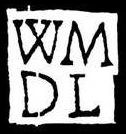
Attention started to be paid to Polish woodcuts at the turn of the 19th and 20th
centuries. During this period, however, researchers were not so much interested
in the artists themselves, neither their methods nor the history of such artistic trends.
They concentrated rather on individual works of art, their iconography and stylistic
qualities, hailing the woodcuts’ simplicity as having aesthetic and artistic values.
The first works on the subject were based on a limited group of objects, with some of
the items becoming dispersed after 1945. In 1948, Józef Grabowski – an art historian,
museologist and creator of the State Institute for Research of Folk Art in Warsaw –
noted that still “we stand before a full undertaking of research, critique,
and classification of materials which are in our possession; to place them in space
and time, only then allowing us to propose a more synthetic understanding and
letting us draw conclusions.”
Since that time not much has changed. An attempt to provide a holistic
approach to Polish folk woodcuts took place in Kraków in 1970 during the 3rd
International Print Biennial, which was accompanied by the International
Symposium dedicated to the subject matter. Unfortunately, these efforts were not
marked by any continuing research of any great significance. After 1970 only
individual works pertaining to specific items were carried out.
Nowadays we still do not know much about the history of the phenomenon.
The history of the methods and the origins of the woodblocks and their resulting
prints still leave many questions unanswered. Many artists remain anonymous,
or are simply known by their initials, while some antique folk woodcuts still await
discourse which would not be possible if not for wide-ranging field research
and the cooperation of many institutions. In the meantime, modern technology has
created the possibility to accumulate the knowledge of Polish folk woodcuts,
permanently document it, and make it available to public opinion.
That is why the primary aim of the project is to create a base which would
allow for the systematisation of dispersed knowledge about this area of folk art
and its continuous updating. This in turn will provide the bases upon which further
academic research and conservation may be undertaken. Institutions and people
concerned with the documenting, diffusion, and protection of cultural heritage
will be given a platform upon which to cooperate in a broader sense. One can hope
that the exchange of knowledge and experience of interested parties in this subject
matter will not only pave the way for the creation of new works, but also the seeking
out of hitherto unknown historic artefacts.
The Virtual Folk Woodcut Museum would also like to extend to new
environments, such as education and media. The Museum’s main goal is to show,
though new means, the enduring value of folk woodcuts as a source of artistic
fascination and research.

